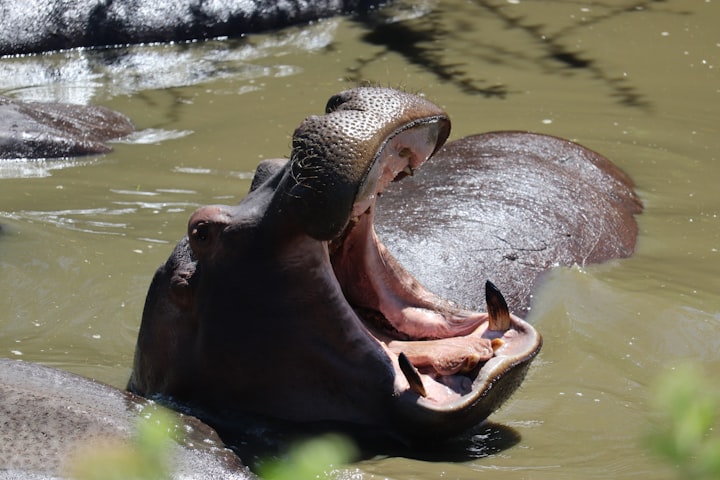Real Dinosaurs are Better Than the Movie
What I've learned living with dinosaurs

Note: This story was originally published in Illumination. I retain the rights.
When my cockatiel, Ziggy, falls flat on her face, I ask, “How did your ancestors survive the asteroid?”
She is as confused as I am.
Dinosaurs are the absolute worst writing companions I could have ever asked for. Imagine a cat but with pliers for a face. I have to consider how easy keys are to rip off when shopping for laptops. They uniquely ruin my life in several different ways.
However, sometimes, I look at my birds and think about how I’m in the presence of dinosaurs. Not only that, I feed them. There are two dinosaurs who choose to spend time with me.
I feel pretty badass because dinosaurs love me.

Every day, I live with proof of the stubborn audacity to keep living, and I keep living. My birds’ ancestors survived the extinction event, so I can survive today.
They’re curious and mischievous and inspired me to put together a list of things you may not have known about bird evolution.
Because they got all that sass from somewhere.
1. Birds ARE Reptiles
Many of us were taught dinosaurs were giant lizards. Well, they’re not lizards. But they are warm-blooded reptiles.
The original classification of birds as separate from reptiles was theorized in the late 1700s. This was really the first swing humans had at species classification, so our understanding has changed a lot since then considering this is Pre-Darwin.

I’m going to try keeping this information as easy to understand as possible, but it is confusing. Bear with me.
The earliest reptiles were born roughly 320 million years ago in the Carboniferous period, and they weren’t incredibly impressive. However, they were reptiles and all of their descendants are also reptiles.
This group is known as Sauropsida, which is basically the same thing as “reptile” except updated. The classification is based on common traits and ancestry, and we know the branch-off between birds and “classic” reptiles had not occurred yet. Sauropsida is split into two groups. One of those groups is completely extinct. From here, think of evolution as a series of umbrellas. All descendants of one umbrella are always under that umbrella. All members of Sauropsida are reptiles.
After Sauropsida comes a long line of extinct clades alongside the reptiles evolving into the ones we know today. This trend would change 260 million years ago in the Permian period. The final ancestor of all reptiles alive today was a reptile in the group “Sauria.”
Sauria branches into the ancestral group of lizards and snakes and the ancestral group of crocodiles and birds: Archosauromorpha. The last break with classic reptiles was between bird ancestors and crocodiles.
Yep, you read that right. Crocodiles. The closest living relative to birds is the crocodile.
The earliest known Archosaurs existed in the early Triassic period. After this, it split into two groups: crocodilians and Avemetatarsalia. The descendent of Avemetatarsalia is Ornithodira and then -drumroll please- Dinosauromorpha. The first non-avian dinosaur would be Triceratops.
Reptiles are classified as “all descendants of Sauropsida.” Therefore, birds are reptiles.
If you need more evidence, go look at bird feet pictures. I’ll wait.
2. Why are birds dinosaurs?

Dinosaurs are all characterized by how they walk. Their feet are directly beneath their body while crocodilian legs are sprawled to the side. Another key difference is that dinosaurs are warm-blooded. Their evolutionary siblings, pterosaurs, are also warm-blooded, so that shift happened before dinosaurs but after the break from crocodiles.
From these dinosaurs would evolve a bipedal, three-toed dinosaur with hollow bones called a therapod. Therapods consist of T-Rexes, allosaurus, velociraptors, and avian dinosaurs.
Avialae, the ancestors of birds, evolved around 155 million years ago. Archaeopteryx (pictured below) is one of the earliest forms, and is actually the fossil that bridged birds and dinosaurs because it has distinct characteristics of both.

It was strange looking for sure, and beaks were far off in the future when this thing flapped around. To say it flew may be giving it too much credit, but it tried its best. It was not a bird, but Archaeopteryx awkwardly flapped so birds could fly.
Birds were already around by the time the asteroid decided to crash the party. The earliest birds we can say are birds appeared in the middle of the Cretaceous Period.
3. Birds Act Like Dinosaurs
This is my favorite fact that a lot of people don’t know.
Many people know birds are dinosaurs, but their mental image of a dinosaur is still straight out of Jurassic Park. Maybe with feathers.
In the scope of evolution, the extinction event really wasn’t that long ago. Birds today aren’t so different from their ancestors. Feathers evolved before birds did, and several non-avian dinosaurs are known to have had feathers.
It is really difficult knowing what pre-bird dinosaurs were like because it isn’t like we can actually observe them. A dinosaur would need to have died doing a distinct behavior associated with birds before being frozen in time for us to find later. That’s a tall order.
We found one fitting that description in 2005. I cry every time I look at this fossil and I am dooming you all to the same fate.
The first fossilized evidence of dinosaur-bird behavior was Mei long, and she was likely killed by carbon monoxide poisoning after a volcano eruption. The ash swept over her body and preserved her. This was long before the asteroid impact.
I currently have a dinosaur sleeping like this on my shoulder. Covering their faces with their wing is a way of keeping warm, and evidence suggests this behavior far precedes birds. And we know that because of a little dinosaur who went to sleep and never woke up.

Much of what comes to mind when you think “dinosaur” is based on early assumptions of what they must have been like based on lizard behavior. The truth is much more colorful than that. Now, we are learning what dinosaurs were like through studying birds. Until recently, paleontologists thought dinosaurs abandoned their young. We now know dinosaurs were caring parents who built nests.
There’s a good chance dinosaurs were curious and interactive like birds are today. Social behaviors we associate with birds evolved long before they could be called birds.
And yes, many of them sounded like birds too. Jurassic Park wouldn’t be nearly as scary if the T-Rex was accurate but I’d still pay to see it.
4. We are more related to cows than cockatiels are to chickens
Mammals didn’t diversify until after large dinosaurs were gone and are relatively new to the stage. Our split-off with the ancestor of cows? 65 million years ago. Right after the extinction event.
The split-off between chickens and other birds was 69 million years ago, which was shortly before the extinction event. Birds had evolved by the asteroid impact, although it wasn’t too long before.
Placental mammals also breed slower than birds, so several more generations of birds have come and gone than the generations between us and cows.
But this should give you a good idea of exactly how genetically diverse birds are compared to mammals. They existed before mammals had a chance to diversify.
5. Dinosaurs are the most evolutionarily successful vertebrates
Other than humans, what animals other than insects are found on EVERY continent in the world?
Instead of going extinct, dinosaurs adapted. They spread to every continent including Antarctica thousands of years before humans existed as a species. There are over 10,000 species of dinosaur in existence today, while the number of extinct dinosaur species identified is only 1,000. Dinosaurs today are alive and even more diverse and widespread than their ancestors.

Conclusion
Birds are dinosaurs, but most of us don’t know what that really means. We understand dinosaurs more because they still exist. They had colorful crests and feathers. They flocked together and bonded.
We know the T-Rex was scary but not nearly as terrifying as we think. Evidence suggests the T-Rex was more of a scavenger than dangerous predator. They were gigantic bipeds with hollow bones. Can you imagine how fragile they would be? They were probably comparable to oversized vultures.
The dinosaurs I live with are weird, curious, colorful creatures, and they inherited that from their ancestors. They’re funny and dorky, and the Jurassic Period was much more chatty and colorful than we think.
Instead of distant roars, the sounds filling the air would be chirping, cooing, and chatter. A tiny creature with colorful feathers and large eyes may hang from a tree, studying you with curiosity. The forests would be alive with flashes of vibrant color.
Occasionally, you may see a dispute between dinosaurs that reminds you of fluttery songbird arguments between two pissed-off sparrows. You would laugh at their silly antics more than you think. If you make friends with one, it may present you with tiny gifts similar to how crows give their human friends gifts today.
Real dinosaurs are way better than the movie.
Further Reading:
Pickrell, John. Flying Dinosaurs: How Fearsome Reptiles Became Birds. Columbia University Press.
About the Creator
Alexa Baczak
I woke up this morning with too many thoughts, and I'm going to make it everyone's problem | alexabaczak.com | alexabaczak.substack.com/welcome






Comments
There are no comments for this story
Be the first to respond and start the conversation.